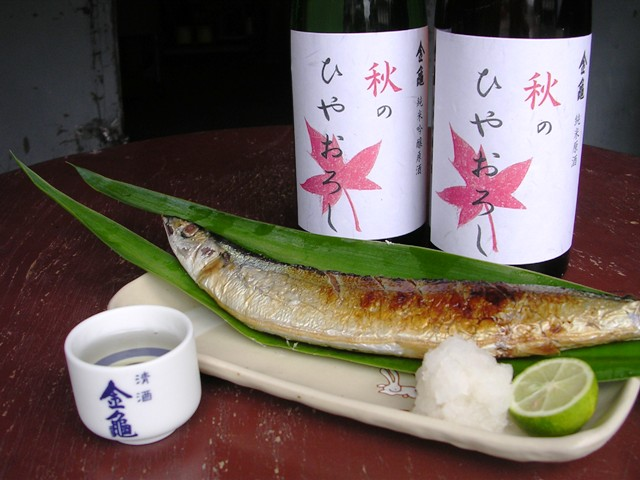As the weather begins to cool and the leaves slowly turn red and gold, Japan welcomes not only the beauty of autumn but also the arrival of one of the season’s most beloved drinks — Hiyaoroshi (冷やおろし). Often called “autumn sake,” this special release marks a moment long awaited by sake lovers every year.
What Is Hiyaoroshi?
Hiyaoroshi is a type of namazume sake, meaning it has been pasteurized once (instead of the usual twice). It is brewed in the cold winter months, then stored and matured during spring and summer, and finally released in autumn, when the temperature outside becomes similar to that of the brewery cellars.
This seasonal timing gives Hiyaoroshi its smooth, mellow taste — less sharp than fresh sake, yet more vibrant than long-aged varieties. The flavor is often described as well-rounded, with a soft umami note and a gentle aroma that perfectly suits the crisp air of autumn.
Why Autumn?
Traditionally, sake brewers used the cooler temperatures of autumn to safely ship their matured sake without it spoiling — hence the name “hiyaoroshi,” which roughly translates to “cooled down and shipped.” Over time, this became a celebrated seasonal tradition, and now many breweries time their releases to September or October to mark the start of sake’s autumn season.
How to Best Enjoy Hiyaoroshi
Unlike many other sakes, Hiyaoroshi is best enjoyed slightly chilled or at room temperature. This allows its round, mellow notes to shine through without losing their delicate balance. Some people also enjoy it slightly warmed (nurukan), especially as the evenings grow cooler, which enhances its umami character.
Hiyaoroshi pairs beautifully with autumn foods such as:
- Grilled sanma (Pacific saury) — the rich, oily flavor of sanma complements the sake’s mellow acidity.
- Matsutake mushroom dishes — the earthy fragrance of matsutake harmonizes with the sake’s smooth aroma.
- Chestnut rice (kuri gohan) or pumpkin nimono (simmered pumpkin) — gentle, sweet flavors that enhance the sake’s soft depth.
- Autumn tempura — made with seasonal vegetables like sweet potatoes and mushrooms.
For a complete experience, serve your Hiyaoroshi in a ceramic ochoko or glass cup depending on the temperature, and take your time — this is a sake meant to be savored slowly, in rhythm with the season.
Regional Varieties
Every region in Japan produces its own version of Hiyaoroshi, each reflecting the local brewing water, rice, and climate. For example:
- Niigata’s versions tend to be clean and crisp, perfect for those who prefer lighter sake.
- Hyogo and Kyoto often produce richer, umami-forward Hiyaoroshi due to their traditional sake rice (like Yamada Nishiki).
- Tohoku’s Hiyaoroshi varieties, brewed in cooler climates, often carry fruity and floral notes with a silky finish.
Many breweries hold autumn sake festivals or limited tasting events where visitors can try different styles of Hiyaoroshi and compare regional flavors.
Final Tip: Experience the Season Through Sake
Hiyaoroshi is more than just a drink — it’s a reflection of Japan’s appreciation for the seasons and the art of balance in flavor. Whether you enjoy it with a cozy autumn meal or during a quiet evening watching the changing leaves, Hiyaoroshi invites you to slow down and experience the gentle transition from summer to autumn.

